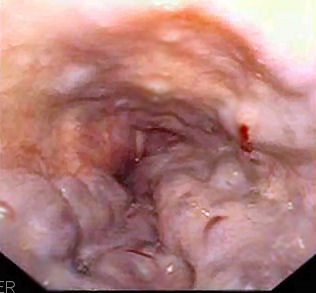Practice question answers esophageal pathology
Practice question answers Esophageal pathology Updated: 03/07/2021 © Jun Wang, MD, PhD 1. D. Dysphagia may be caused by abnormal esophageal motility or physical obstructions, including web and ring , as well as cancers . In this case, physical obstruction is ruled out by endoscopy and image studies. High-resolution manometry is used to monitor the pattern of esophageal motility. Chest pain without other presentations is less likely caused by coronary artery or mediastinal abnormality. Biopsy is used when there is suspicious lesions, or symptoms of reflux. 2. C. Diffuse uncoordinated muscular contraction involving entire esophagus is consistent with diffuse esophageal spasm . Achalasia is characterized by lack of progressive peristalsis and partial/incomplete relaxation of lower esophageal sphincter . Esophagitis , including candidiasis and esophageal web have changes can be identified by endoscope or image studies. 3. A. Achalasia is characterized by lack of progres
